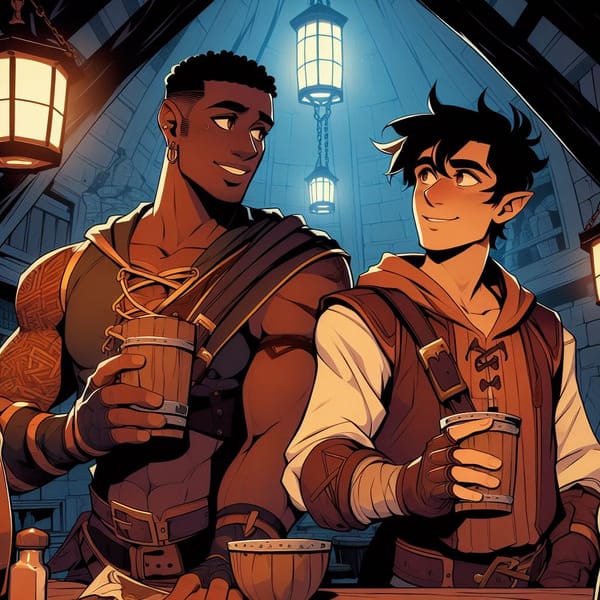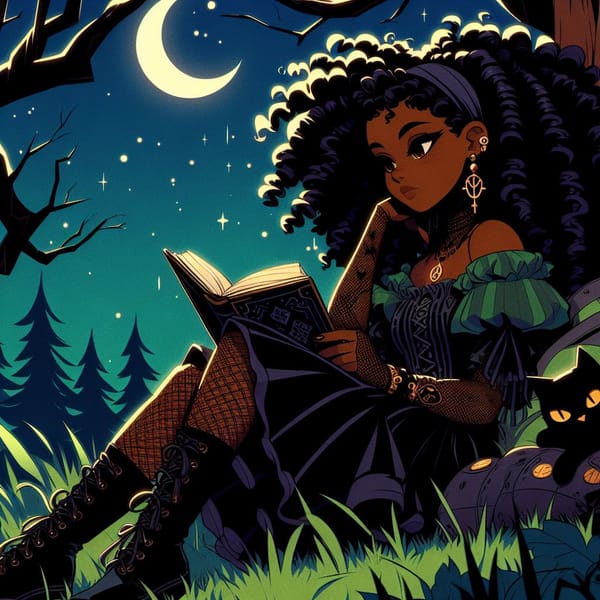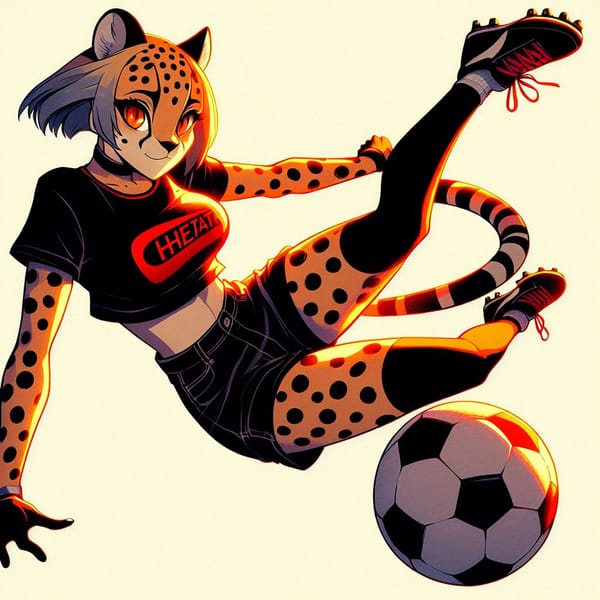Task Management with Gamification: The Ultimate Guide to Gamify Project Management
Transform your project management into an exhilarating quest with Task Slayerz! Discover how to gamify project management to boost motivation, engagement, and success. Our guide offers strategies to turn tasks into exciting challenges,and celebrating achievements.

Welcome, adventurers! You are about to embark on a quest, a journey where you will tackle your tasks as if they were mighty beasts. Your life will become a grand adventure, and each completed task, a triumphant victory.
This is not just about time management or productivity; this is about changing the narrative, putting the fun back in function, and living your life as a quest.
This isn't just about juggling responsibilities or ticking off items on a to-do list; it's about reimagining project management through the thrilling lens of gamification.
Why Gamify Project Management?
In the hustle of our daily work life, project management can often feel overwhelming and monotonous. That's where gamification comes into play. By injecting game elements into project management, we transform routine tasks into compelling challenges, making our work more enjoyable and productive. This approach not only boosts team morale but also drives project success.
The Game of Project Management
As project managers and team members, we've often faced the challenge of keeping everyone motivated and on track. Gamified project management is our secret weapon. It introduces a level of fun and competition into our work environment, transforming the way we tackle projects. From setting clear objectives to celebrating achievements, every aspect of project management is revitalized.
Building a Rewarding System
One key aspect of gamifying project management is developing a rewards system. This system is designed to recognize and celebrate both small wins and major milestones. Whether it's earning points for completing tasks or receiving badges for meeting deadlines, these game mechanics foster a sense of achievement and motivate us to push our limits.
Encouraging Healthy Competition
By introducing elements of healthy competition, gamification in project management creates an environment where team members are inspired to give their best. Leaderboards, point systems, and team challenges encourage collaboration and friendly rivalry, keeping everyone engaged and focused on collective and individual goals.
Personalizing the Gamification Experience
At Task Slayerz, we understand that each team and project is unique. That’s why our approach to gamified project management is flexible and customizable. Whether you're working in a physical office or managing remote teams, our techniques and strategies are designed to fit your specific needs and enhance your project management experience.
What is Gamification? Why Does It Matter for Completing Tasks?
Definition of Gamification
At its core, gamification is the use of game mechanics in non-game contexts. It is the concept of applying elements from game design (think points, levels, leaderboards) to other areas of activity.
Definition of Task Management
Task management, in contrast, is the process of managing a task through its life cycle. It involves planning, testing, tracking, and reporting that can help individuals achieve their goals.
Why Gamification is Important for Completing Tasks Consistently
Gamification and task management may seem worlds apart, but when blended, they can create a potent combination. Here are some reasons why.
Motivation
By transforming mundane tasks into exciting quests, we imbue them with a new sense of purpose and make them more engaging. This heightened engagement can lead to improved motivation and a higher likelihood of task completion.
Work Life Balance
Gamification can make work more enjoyable, and when we enjoy what we do, we are more likely to achieve a healthier work-life balance.
Not Burning Out
The journey of life is not a sprint; it's a marathon. By gamifying tasks, we can pace ourselves, avoid burnout, and maintain our enthusiasm over the long haul.
Reaching Goals Like a Marathon, Not a Sprint
With gamification, every completed task brings us one step closer to our ultimate goal, much like a marathon. Each step, no matter how small, carries us forward. Over time, these incremental gains add up, and before we know it, we've reached our goal.
The Strongest Element of Gamification: Epic Meaning
The strongest element of gamification is what we call "Epic Meaning." This term refers to the profound sense of purpose that gamers experience when they believe they are working towards something larger than themselves.
Understanding Your Why
To harness the power of Epic Meaning, you must first understand your "Why." Your Why is the reason you get up in the morning, the cause or belief that inspires you.
Positioning Your Why in a Fun Fantasy
Once you've discovered your Why, position it within a fun fantasy context. This could mean setting your goal as the treasure at the end of a perilous journey, the dragon to slay, or the kingdom to save.
Living the Fantasy to Drive You to Your Why
Now, it's time to live your fantasy. Start seeing your tasks as the challenges you must overcome on your journey towards your goal. As you complete each task, imagine yourself moving closer to your ultimate objective.
How to Gamify Your Tasks
Having covered the theoretical groundwork, we are now ready to venture into the practical realm of gamified task management. But before we do, let's familiarize ourselves with the key mindsets that will help us on our journey.

Mindsets
LARP (Live Action Roleplay)
One key mindset for gamifying tasks is Live Action Role Play (LARP). This involves fully immersing yourself in your chosen fantasy context, seeing yourself as the protagonist of your life quest.
Discipline
Another crucial mindset is discipline. As with any quest, there will be times when the journey is tough, and your motivation wanes. It is in these moments that your discipline will carry you forward.
Consistency
Consistency is the linchpin of any successful quest. It's about showing up every day, ready to face your challenges, no matter how insurmountable they may seem.
Systems
Successful quests are underpinned by robust systems. By establishing a solid task management system, you can navigate your journey more effectively and increase your chances of success.
Faith
Lastly, faith. You must believe in your ability to overcome the challenges on your path and reach your goal.
Communication
Having the right mindsets in place is crucial, but it's equally important to communicate effectively. Whether you're sharing your journey with fellow adventurers or seeking guidance from a mentor, clear and concise communication can make all the difference.
Choosing a Modern Task Manager
A modern task manager is your gateway to a gamified approach to task management. Platforms like Notion and Monday.com can help you organize your tasks, set goals, and track your progress.
Getting the Base Setup aka Prepping Your Adventurer's Pack
As you embark on your quest, you'll need an Adventurer's Pack. This pack is a compilation of tools and resources that will assist you on your journey.

What's an Adventurer's Pack?
Your Adventurer's Pack consists of the following components:
Journal - Log of Your Adventure and Findings
The Journal is where you'll keep a record of your journey, documenting your goals, motivations, and insights.
Potions - Methods to Physically, Mentally, or Spiritually Revive Yourself
Potions are restorative measures that can help you recover health, mana (mental strength), and spirit.
Quests - Recurring Tasks
Quests are recurring tasks that you'll encounter regularly on your journey.
Monsters - Tasks Correlated to Points
Monsters are tasks that you need to conquer. Each monster vanquished earns you points.
Leaderboard - Used to Review How You've Been Doing on Your Adventure
The Leaderboard is where you'll track your progress, monitoring how many monsters you've slain and how many points you've amassed.
Journal Tab
The Journal tab is where you'll lay the foundation for your adventure. Here, you'll document your goals, motivations, and learnings.
Setup
To set up your Journal tab, you'll need to input the following fields:
Name
This is the title of your journal entry.
Notes
This field is where you'll document your insights, experiences, and motivations.
Date
This is the date of your journal entry.
Category
This field is where you'll categorize your journal entry. Categories could include things like "Goal Setting," "Motivation," or "Insights."
How to Start
Kick off your Journal tab by writing down your big goal for the next year and your big goal for the next three years. Also, write down a note that will motivate you in the future.
Potions Tab
Potions are resources that help to restore your health, mana, or spirit. They come in three types:
Setup
Name
This is the name of your potion.
Type: Health, Mana, Revival
Health: Physical
Health potions help to restore your physical health. Examples include drinking water, eating vegetables, getting sunlight, and exercising.
Mana: Mental
Mana potions help to restore your mental health. Examples include meditating, listening to music, and making art.
Revival: Spirit
Revival potions are similar to Mana potions, but they help to restore your spiritual health. Examples include seeing friends/family, doing something you love, and personal methods of improving your spirit.
How to Start
To start, list three Health Potions, three Mana Potions, and three Revival Potions.
Quests Tab
Quests are recurring tasks that will become monsters during your weekly or daily planning. They are classified into Daily Quests, tasks that repeat daily, and Weekly Quests, tasks that repeat weekly.
Setup
To set up your Monsters tab, you'll need to input the following fields:
Name
This is the name of your task.
Monster: Slime, Goblin, Wolf, Troll
This is the category of monster your task falls under, with each monster representing a different level of difficulty.
Status: Todo, Doing, Delegated, Done
This field tracks the status of your task.
How to Start
To begin, dump all of your recurring tasks into a modern note-taking program. Then, organize them by daily or weekly frequency and add them to your Quests tab.
Monsters Tab
Monsters are the tasks that you need to slay. They vary in difficulty and are correlated to points, with more challenging tasks earning more points.
Setup
To set up your Monsters tab, you'll need to input the following fields:
Name
This is the name of your task.
Monster: Slime, Goblin, Wolf, Troll
This is the category of monster your task falls under, with each monster representing a different level of difficulty.
Status: Todo, Doing, Delegated, Done
This field tracks the status of your task.
Due Date
This is the date by which you aim to complete your task.
Points
Points should be based on the monster type of the task, with more challenging tasks earning more points.
How to Start
To get started, dump all of your current tasks into a modern note-taking program. Then, organize them by difficulty using Monsters and their associated points, and add them to your Monsters tab.
Leaderboard Tab
The Leaderboard tab is where you'll review your progress, track your points, and celebrate your victories.

Setup
To set up your Leaderboard tab, you'll need to input the following fields:
Week
This is the date field that should always be a Monday or Sunday, depending on your week structure.
Status: Past, Current, Future
This field tracks the status of your week.
Monsters
This field should be linked to your Monsters tab and will list all the tasks you aim to complete that week.
Points Earned
This field will display the total points you've earned that week by adding up the points from all completed tasks.
Connecting Monsters to Leaderboard
To connect your tasks to the Leaderboard, you'll need to fill out the new Leaderboard or Week column in your Monsters tab. This will link each task to the corresponding week in which it is set to be completed.
How to Start
It's generally best to focus on the Leaderboard tab 2-3 times per week. When you look at the tab, ensure that all tasks are tied to the week you're currently working on. If tasks or points are missing, edit the Monsters tab to mark tasks as complete and ensure they're tied to the correct week.
Task Slaying Tips & Tricks
Turning Tasks into Monsters
On a weekly basis, dump your tasks into a modern note-taking program such as Notion. Organize them by difficulty using Monsters and their associated points, and add them to your Monsters tab.
Earning & Reviewing Points
Earning points is as simple as slaying monsters (completing tasks). Review your points on a weekly basis by looking at the Monsters and Leaderboard tabs.
Using Potions
Potions are resources that help to restore your health, mana, or spirit. Many adventurers list potions in their Monsters tab, treating them like "Loot" to be gained after slaying a few monsters.
Rewards & Ranks
By tracking your points, you'll begin to achieve work-life balance and optimize your daily work. Moreover, completing tasks at a certain rate each week can earn you ranks. To learn more about ranking up, download our Copper Adventurer Handbook.
What's This All About?
So far, you've been introduced to a system that gamifies tasks, making them more engaging and easier to complete. But remember, this isn't just about completing tasks; it's about transforming your life into an epic adventure. And remember, in the end, the goal isn't to achieve perfection but to grow and evolve through the journey.
Case Study 1: Achieving a Dream Personal Goal - Marathon Run
Introduction: The Dream of Running a Marathon
Emma, a 29-year-old software developer, always dreamt of running a marathon. However, balancing a full-time job and personal life left her with little time and energy to train. This case study explores how Emma used gamified project management techniques to turn her dream into a reality.
Setting the Goal: The Marathon Finish Line
Emma's dream was specific: to complete a full marathon. This goal was not only about physical endurance but also about personal achievement and pushing her limits.
Gamification Techniques Employed
- Breaking Down the Goal: Emma divided her marathon preparation into smaller, achievable milestones, such as weekly distance targets and dietary plans.
- Reward System: She created a rewards system where each milestone achievement earned her points, leading to a small reward, like a favorite treat or a movie night.
- Tracking Progress: Emma used a fitness app to track her running progress, turning her training sessions into a game where she could beat her own high scores.
- Social Element: She joined a local runners' club and participated in smaller races, adding a social and competitive element to her training.
Challenges and Overcoming Them
Emma faced challenges like time management and initial low stamina. She tackled these by setting consistent training schedules and gradually increasing her difficulty levels, turning each challenge into a 'level up' in her game.
Results: Crossing the Finish Line
After six months of gamified training, Emma successfully completed her first marathon. The gamification techniques kept her motivated and focused, turning a daunting task into an enjoyable and fulfilling journey.
Case Study 2: Career Goal - Becoming a Team Leader
Introduction: Aspiring to Leadership
John, a 35-year-old marketing specialist, aspired to become a team leader. His challenge was to develop the necessary skills and experience while proving his capability to his superiors.
Setting the Career Goal: Team Leadership
John's career goal was clear: to be promoted to a team leader within his company. This required him to demonstrate leadership skills, strategic thinking, and effective project management.
Gamification Techniques Employed
- Skill Development Milestones: John identified key skills needed for leadership and set monthly goals to develop these, such as completing online courses or leading small project teams.
- Performance Points System: He gamified his performance evaluations by setting up a points system, where achieving specific targets translated into points that he tracked in a personal leaderboard.
- Feedback Loop: Incorporating real-time feedback from colleagues and supervisors, John treated each piece of feedback as a 'power-up' to improve his performance.
- Collaboration Challenges: He initiated collaborative projects with other departments, treating each as a mission to enhance interdepartmental relationships and showcase his leadership.
Challenges and Strategic Approaches
John initially struggled with public speaking and decision-making. He turned these into gamified challenges, where each public speaking event or critical decision was a mission, helping him gradually build confidence and expertise.
Results: Achieving the Leadership Role
Within a year, John's gamified approach to his career development paid off. His superiors recognized his improved skills and his contribution to the company, leading to his promotion to a team leader role. The gamified project management approach not only helped him reach his career goal but also made the journey engaging and measurable.
Where Do I Start?
Starting your gamified task management journey is simple. All you need to do is:
- Download a modern note-taking program, like Notion or Monday.com
- Setup your Adventurer's Pack with our guide
- Start living your epic adventure
What's Dayquest?
So, you may ask, "What's the secret sauce that binds all these concepts together?" It's none other than Dayquest, our custom-made methodology or philosophy for gamifying tasks on modern task management platforms.

At Dayquest, we don't see tasks as boring, mundane chores that have to be completed. Instead, we believe each task is a unique challenge, a thrilling quest that holds the potential to unlock your true potential. We don't believe in just checking off a box; we believe in celebrating victories, big or small.
We don't see a long list of to-dos; we see an exciting adventure that awaits us. And that's why we came up with the Dayquest system — to help you embrace this philosophy and enjoy the thrill of your journey to productivity.
We take ordinary task management practices and infuse them with a sense of fun, excitement, and gamification, making your daily grind an extraordinary journey filled with adventure, thrills, and rewards. In the Dayquest realm, every task slayed is a monster defeated, every project conquered is a dungeon cleared, and every goal achieved is a kingdom saved. We don't believe in a mundane existence, but in a life of adventure and thrill.
In Dayquest, you're not just who you are today. You're an adventurer, a warrior, a hero battling monsters, and conquering dungeons. It's not just about getting things done; it's about turning your life into an epic quest filled with thrilling challenges and rewards.
Dayquest can be used with modern task management platforms, offering a unique way to manage and complete your tasks. To understand more about Dayquest and how it can revolutionize your task management, head over to our about page or read our introductory blog post.
Conclusion
As we conclude our journey through the dynamic world of gamifying project management, let's reflect on the key takeaways and envision how we, at Task Slayerz, can integrate these insights into our future endeavors.
Embracing Gamification in Project Management
Throughout this guide, we’ve learned that gamifying project management isn't just a trend; it's a strategic approach that can revolutionize how we handle projects. By incorporating game elements into project management, we've seen how motivation, engagement, and productivity can soar, not just for us as project managers but also for our teams.
Impact on Team Dynamics and Productivity
Our exploration revealed that adding gamification techniques to our project management processes can significantly boost team morale. By setting up a rewards system, we encourage healthy competition and foster a collaborative environment. This approach has the potential to transform mundane tasks into exciting challenges, making our team more cohesive and focused.
Gamification Elements and Strategies
Incorporating elements such as points, leaderboards, and badges into our project management framework has shown us how we can make each project milestone more engaging. These gamification strategies not only help in tracking progress but also in recognizing and celebrating each team member's contributions, thereby increasing employee satisfaction and reducing the risk of disengagement.
Project Success Through Gamified Management
By applying gamification in project management, we aim to enhance our project success rates. The use of real-time feedback, clear objectives, and a structured rewards system aligns perfectly with our goal to not only meet but exceed our project outcomes.
The Role of Project Managers in Gamification
As project managers, our role evolves in a gamified environment. We become leaders who not only manage but also inspire and motivate. We're tasked with creating a framework that not only drives project completion but also fosters an enjoyable and rewarding work atmosphere.
Looking Ahead: Digital and Physical Tools for Gamified Management
At Task Slayerz, we are excited to announce that we are working on developing both digital and physical tools to aid in gamified project management. These tools will be designed to help project teams break down complex tasks, track their progress, and celebrate their achievements in a fun and interactive way.
Join Task Slayerz for a Gamified Future
We invite you to join us at Task Slayerz. By subscribing to our platform, you'll gain early access to our upcoming tools and resources. Whether you're a seasoned project manager or new to the field, our tools are designed to elevate your project management experience.
Conclusion: Transforming Project Management
In conclusion, gamifying project management is more than just a method; it's an art that combines the rigor of traditional management with the excitement of gaming. It's about creating an environment where team members are engaged, motivated, and driven to succeed. As we move forward, let's embrace these strategies, transforming the way we manage projects and lead teams. Join us in this exciting venture and let's redefine project management together, one task, one game, one success story at a time.
Sneak Peek: Our Next Ultimate Guide - How to Gamify Projects
Having mastered the art of gamifying tasks, it's time we turn our attention to the bigger picture: Projects. Much like how tasks become monsters in Dayquest, projects become dungeons, each with its challenges, milestones, and rewards.
Projects, or as we call them, Dungeons, have their own structure, similar to Monsters. A dungeon comprises a Name, Difficulty (ranging from Copper to Mythril), Due Date, and Rooms. These rooms are nothing but phases or milestones of a project. By breaking a project into rooms, we can focus on each phase independently, gradually progressing towards the project's completion.
Each room, in turn, is filled with Monsters, which are the tasks associated with that phase or milestone. By treating each phase as a room filled with monsters, we make projects more manageable and, at the same time, make progress more tangible and rewarding.
We'll delve deeper into how to gamify projects in our next ultimate guide. From turning projects into dungeons filled with rooms to transforming phases and milestones into rooms filled with tasks, we'll cover it all.
So, keep your adventurer's pack ready, your spirits high, and your eyes on the prize. Let's slay the day, one monster at a time, with Dayquest. Because every day is an adventure, and you are the hero of your story. Join us on this exciting journey as we redefine productivity and task management, one task, one monster, one dungeon at a time.
Welcome to Dayquest, where we make life a game!




